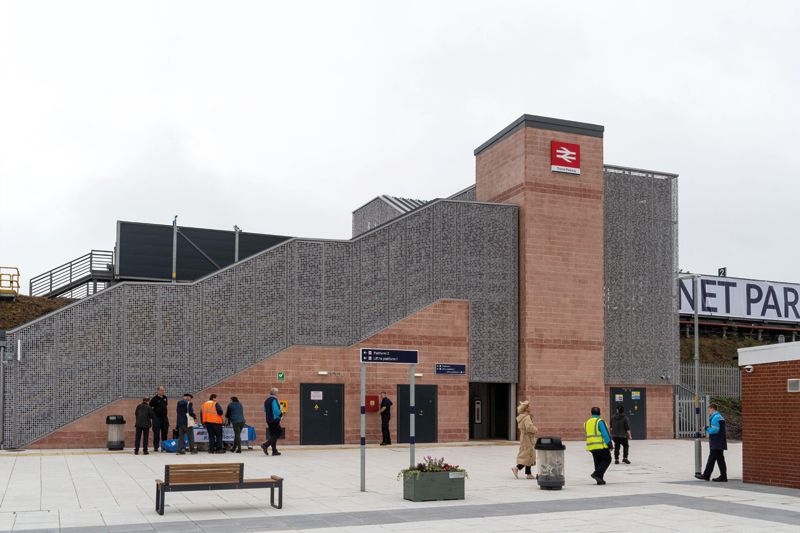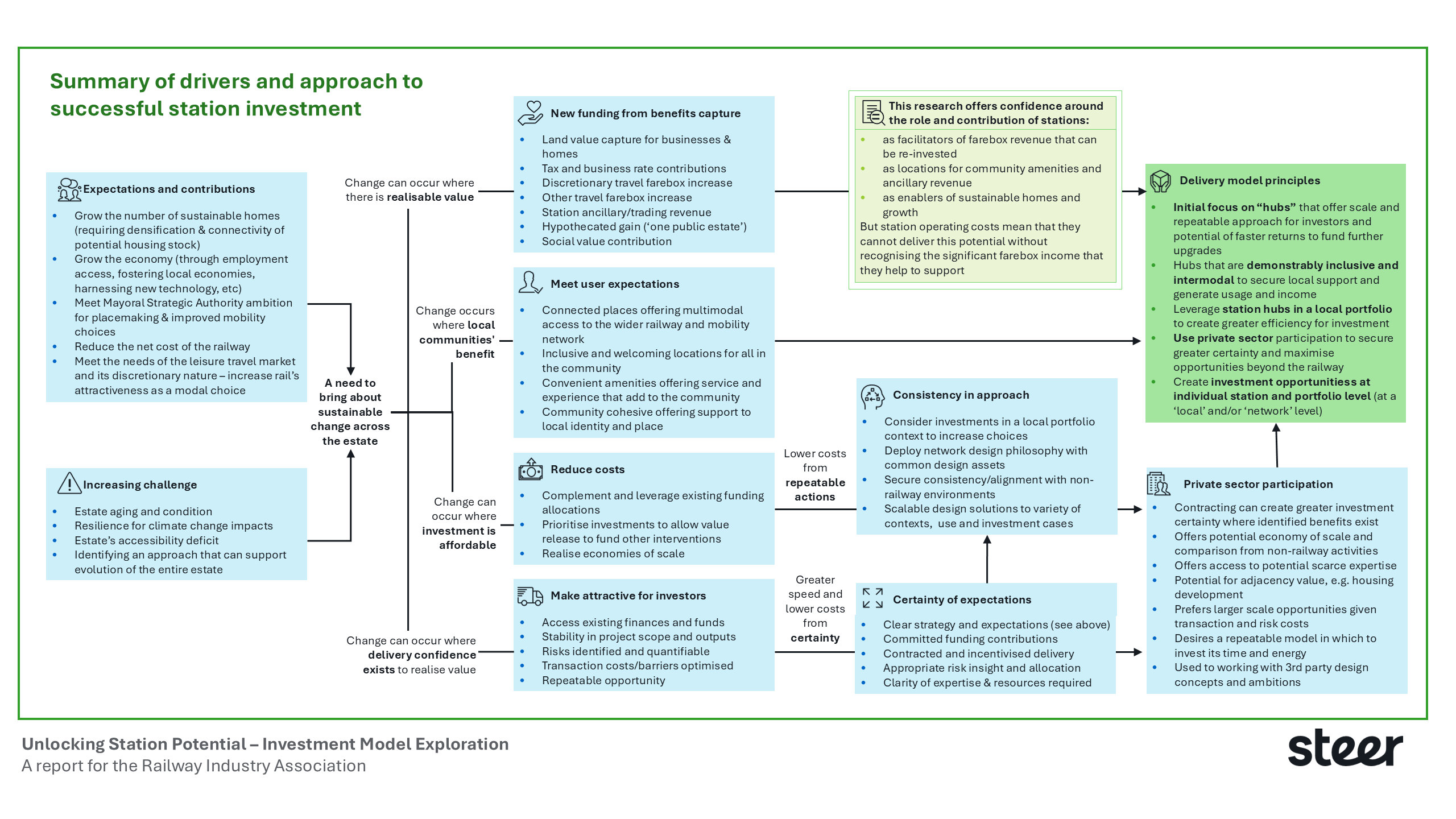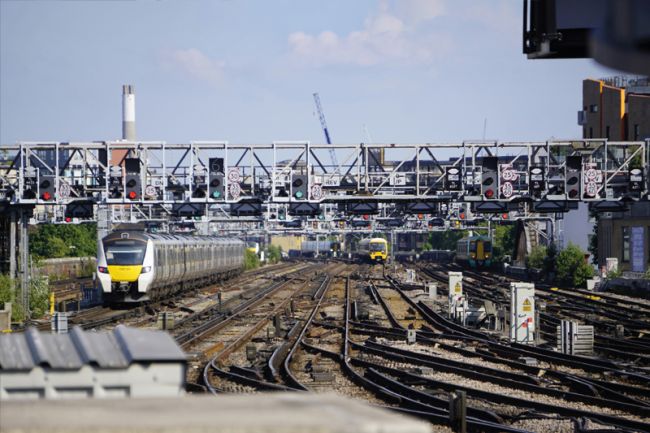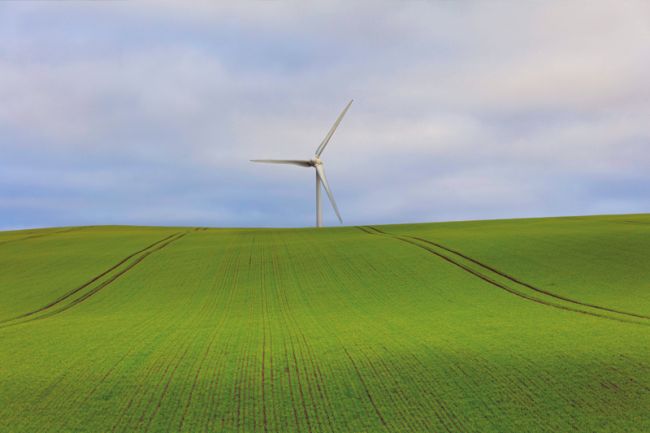New study shows best ways to unlock value of UK railway station estate
Steer and RIA outline strategies to unlock station potential, creating sustainable, connected hubs that drive social and economic value.

There are 2,585 railway stations on mainland Great Britain, and in the coming years, this estate could play a huge role in building connected, sustainable communities. But how do we unlock this potential value for both society at large and commercial investors?
A report prepared by Steer and commissioned by the Railway Industry Association (RIA) lays out a number of innovative strategies to deliver the best value from our stations.
The report, Unlocking Station Potential: Delivery model exploration for the Railway Industry Association, uses a portfolio of 11 stations in North Kent as a representative sample to understand the commercial realities for stations on the ground, the role they play in communities and their contributions to the network at large.
This report is part of a six-month-long dialogue between RIA and the public and private sectors to help them identify practical ways to create and sustain a pipeline of investment for realising the potential of this important national estate. We set out to understand the commercial and asset challenges that might arise with the estate and where the potential for value lies.
The report is timely at a policy moment when the UK Government and regional mayors are focused on sustainable, connected development. Stations have a huge role to play in reducing car trips, and often have surrounding land that can be released for home building.
Our analysis suggested that transforming stations into high-performing, intermodal and inclusive hubs would aid connectivity and create community and commercial focal points. Working with the private sector could bring greater certainty, alternative financing routes and improved economies of scale.
Steer concluded:
Generating additional travel is the best driver of commercial return
Station value is best understood through the contribution they make to farebox revenue. Over £11 billion of revenue is generated from travel through stations, and leveraging this can reshape their position in the eyes of investors.
Stations are not all equal generators of value for the costs absorbed
Some stations have low footfall and revenue potential but still absorb material costs and resources. Prioritisation in the use of scarce resources is a natural step to take, and leveraging those resources to realise value offers the best potential for investment in the wider estate.
Creation of high-performing, inclusive intermodal hubs is a path to value
In two worked illustrations, the potential for commercial return was proven, and it provides confidence that an investment delivery model can be created.
Private sector participation can increase confidence in delivery
Private sector participation could increase the potential for economies of scale and the deployment of new methods. To secure private financing and risk-taking, the opportunity needs to be appropriately defined and of scale.
In terms of policy, the time for unlocking station value is now
Government missions and Mayoral Strategic Authority ambitions for sustainable housing development and better mobility networks make the realisation of value from the station estate more pressing now than ever.
Mike Goggin, Managing Director at Steer, said:
“Our practical research into the realities of stations confirmed that despite the challenges and constraints many locations face, there is the potential to realise additional value for taxpayers.”
“Working with the private sector to create high-performing inclusive intermodal hubs offers the potential to generate additional commercial returns, support sustainable housing development and produce economies of scale that can benefit the entire station estate.”
Robert Cook, Policy Director at RIA, said:
"RIA commissioned Steer to explore the ideas raised in our 'Stations: Engines of Communities' discussion paper, testing the proposals on a real portfolio of stations to establish a concept and a potential way forward for a new investment model for railway stations.
"Steer's work to assess a portfolio of 11 stations on the north Kent coast, offering insight for the wider estate, demonstrates that investments in individual stations can drive up both farebox and commercial revenues, which can not only pay off their own costs in a relatively short stretch of time, but could also be used to upgrade other stations in the region. This does not consider the potential land value and housing development returns that would boost these returns further.
"The research shows that there is a clear opportunity to take these ideas forward, with up to 110 stations identified as potential 'inclusive intermodal hubs' suitable for investment. The creation of Great British Railways and the ongoing move towards devolution presents an opportune moment to re-think and re-model how we invest in railway stations."





















